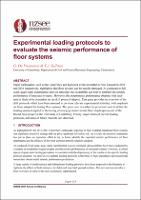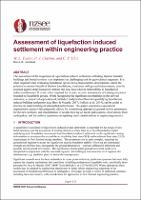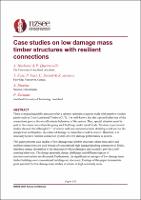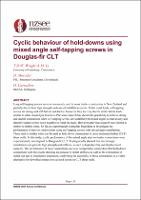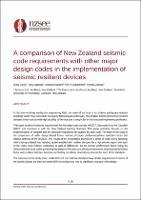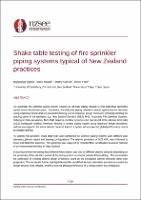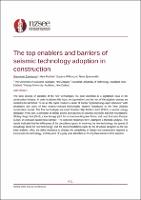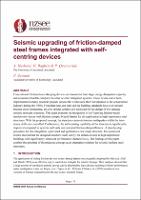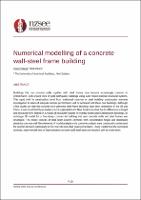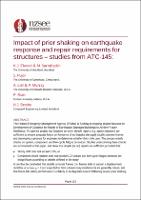Search
Now showing items 31-40 of 44
Experimental loading protocols to evaluate the seismic performance of floor systems
(New Zealand Society for Earthquake Engineering, 2021-04-14)
Major earthquakes, such as the Canterbury and Kaikoura events recorded in New Zealand in 2010 and 2016 respectively, highlighted that floor systems can be heavily damaged. At a reduced or full scale, quasi-static experimental ...
The Assessment of Liquefaction induced Settlement - application within Engineering Practice
(New Zealand Society for Earthquake Engineering, 2021-04-14)
The assessment of the magnitude of liquefaction-induced settlements affecting shallow founded buildings and buried services is an important yet challenging task for geotechnical engineers. It is often required when assessing ...
Case studies on low damage mass timber structures with resilient connections
(New Zealand Society for Earthquake Engineering, 2021-04-14)
There is increasing public pressure to have seismic-resistant structures made with massive wooden panels such as Cross Laminated Timber (CLT). It is well-known that the type and behaviour of the connections govern the ...
Cyclic behaviour of hold-downs using mixed angle self-tapping screws in Douglas-fir CLT
(New Zealand Society for Earthquake Engineering, 2021-04-14)
Long self-tapping screws are now commonly used in mass timber construction in New Zealand and globally due to their high strength and ease of installation on site. Under axial loads, self-tapping screws are strong and stiff ...
A comparison of New Zealand seismic code requirements with other major design codes in the implementation of seismic resilient devices
(New Zealand Society for Earthquake Engineering, 2021-04-14)
In the ever-evolving earthquake engineering field, the need of the hour is to achieve earthquake-resistant buildings which have immediate occupancy following an earthquake. This implies that the demand for resilient dampers ...
Shake table testing of fire sprinkler piping systems typical of New Zealand practices
(New Zealand Society for Earthquake Engineering, 2021-04-14)
An automatic fire sprinkler piping system requires an intricate piping network to feed individual sprinklers spread across the plenum space. In practice, this elaborate piping network is braced against seismic demands ...
The top enablers and barriers of seismic technology adoption in construction
(New Zealand Society for Earthquake Engineering, 2021-04-14)
The slow process of adoption of the new technologies has been identified as a significant issue in the construction industry. In order to address this issue, the top enablers and barriers of the adoption process are needed ...
Seismic upgrading of friction-damped steel frames integrated with self-centring devices
(New Zealand Society for Earthquake Engineering, 2021-04-14)
Conventional friction-based damping devices are known for their large energy dissipation capacity and economic benefits compared to other seismic mitigation systems. These devices have been implemented in many practical ...
Numerical modelling of a concrete wall-steel frame building
(New Zealand Society for Earthquake Engineering, 2021-04-14)
Buildings that use concrete walls together with steel frames have become increasingly common in Christchurch, with around 35% of post-earthquake buildings using such mixed-material structural systems. This rapid shift in ...
ATC-145: Influence of prior shaking on earthquake response and repair requirements for structures and elements
(New Zealand Society for Earthquake Engineering, 2021-04-14)
ATC-145 is a FEMA funded project aimed at developing a Guide for repair of earthquake damaged buildings to achieve future resilience. Thanks in part to EQC funding, the project includes substantial New Zealand representation.
To ...

